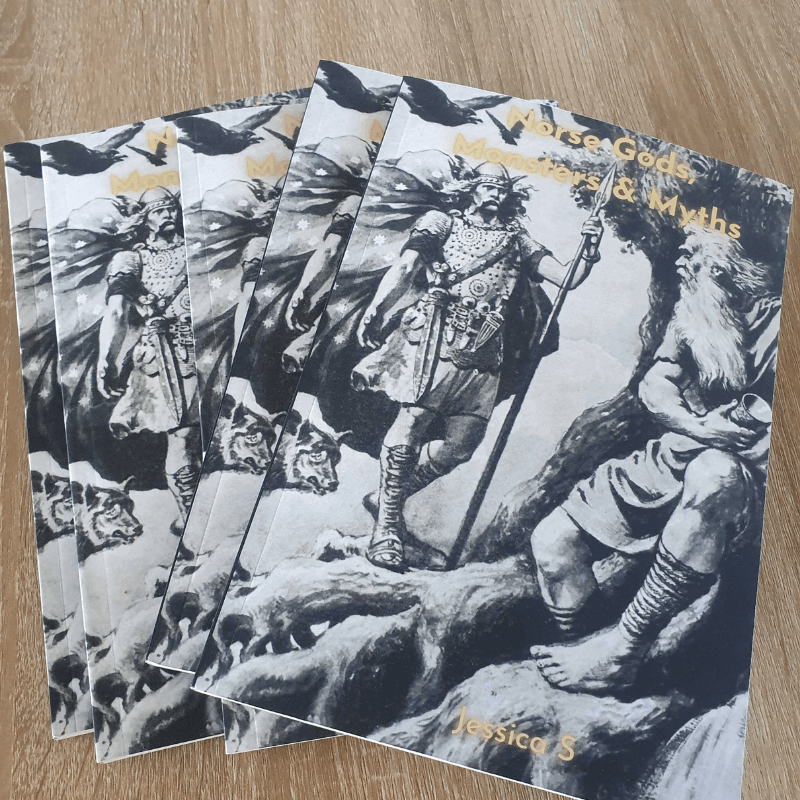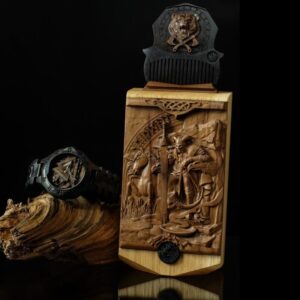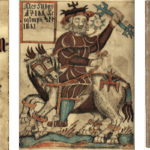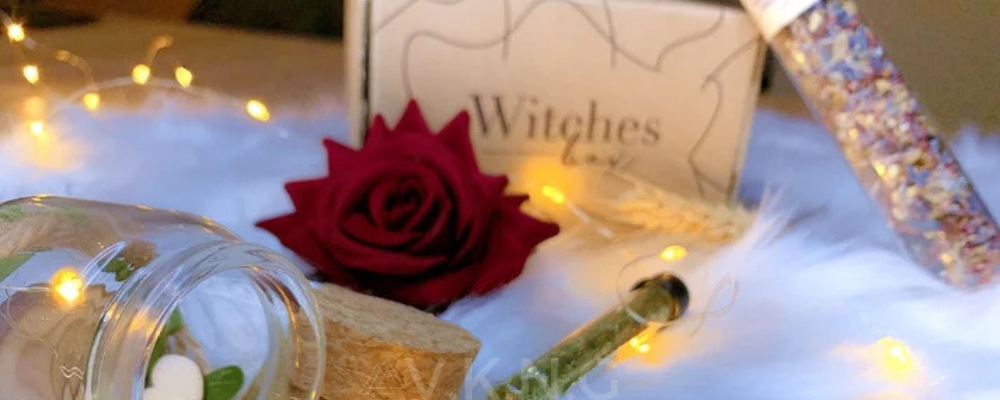
In modern Wicca and witchcraft, herbs are considered powerful conduits for natural energy and are used as fundamental tools in magical practices.
Herbs are also respected for their healing properties, and sophisticated knowledge of herbs was held by folk magic practitioners before the advent of modern medicine.
Any modern practitioner should not just have a fundamental understanding of herbs, but their own Witch’s Garden with the most important herbs.
Read on to learn about ten of the most important magical herbs and their potential use in spell casting.
Mugwort (Artemisia vulgaris)
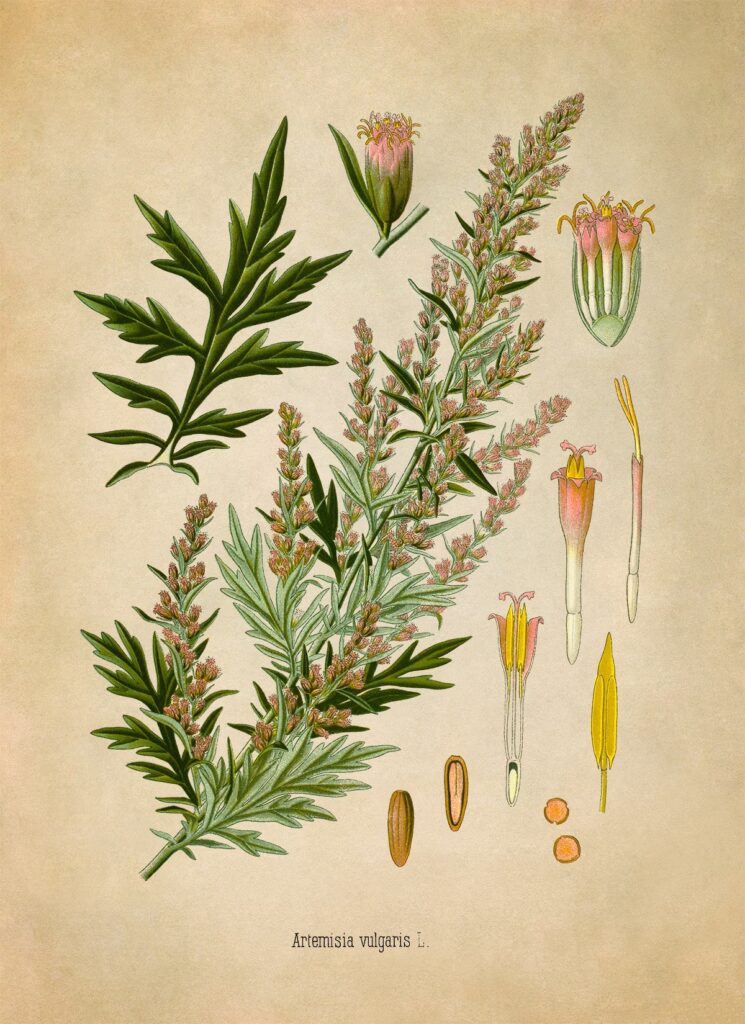
Magical Associations: Divination, prophecy, psychic abilities, lucid dreaming, protection, banishing negativity, purification.
Mugwort has long been valued for its magical properties across the temperate regions of Europe, Asia, and Northern Africa, where it grows.
Its Latin name, Artemisia vulgaris, connects the plant with the Greek goddess Artemis, the goddess of the hunt, the wilderness, and the moon.
This reflects the strong association between the plant and feminine energies.
In China, mugwort was used to repel malevolent spirits, prevent diseases, and invite blessings into the home.
The Anglo-Saxons considered mugwort one of the nine sacred herbs and incorporated it into many ritual practices.
Mugwort has a variety of different spell uses :
- burned as incense when scrying for location
- placed under a pillow to induce prophetic dreams
- carried for protection during travel
- hung around a space to repel negative forces
- used in lunar magic rituals for divination
Plant seeds or cuttings in shallow, well-drained soil and as much sunshine as possible.
Frankincense (Boswellia sacra and other Boswellia species)
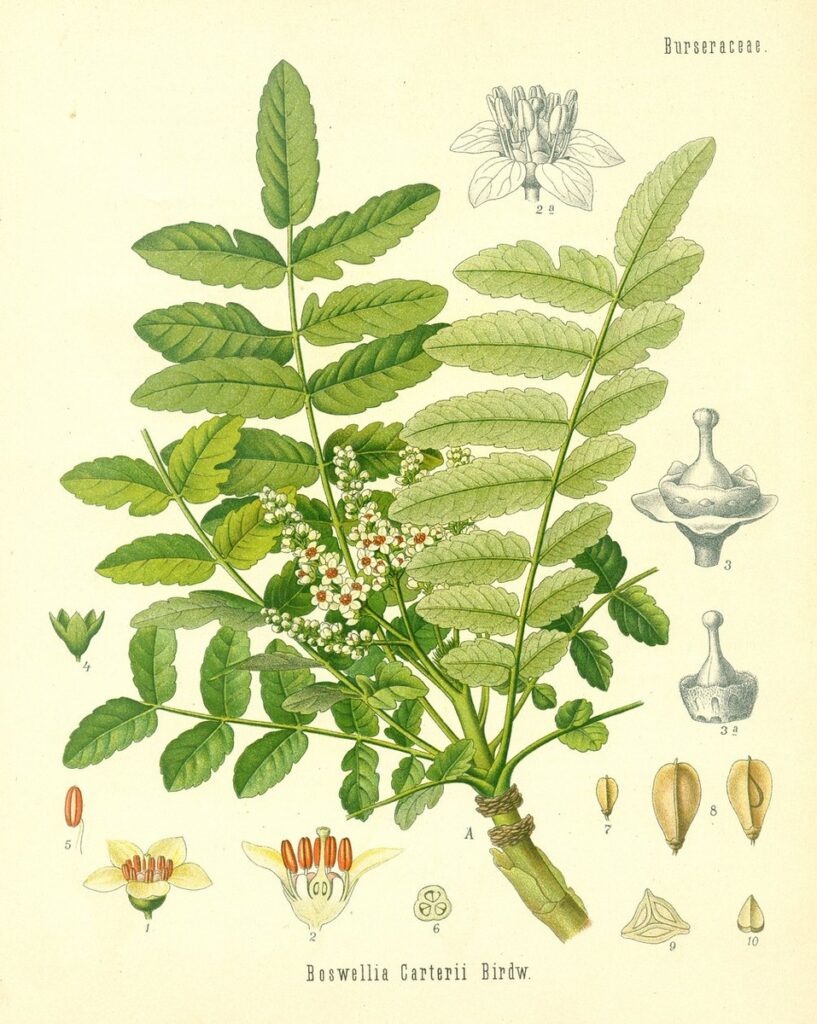
Magical Associations: Purification, consecration, spiritual enlightenment, protection, banishing negativity, drawing in positive energy, meditation, offerings to deities.
Frankincense comes primarily from the Arabian Peninsula, Northeast Africa, and India. Its use dates back thousands of years in ancient Egypt, where it was used in embalming and as an offering to the sun god Ra.
One of the three kings famously offered frankincense as a present to the baby Jesus.
In Greek mythology, Frankincense was associated with the sun god Helios, who turned one of his lovers into a Frankincense tree, and thereafter saw the herb used in many of his rituals.
It is consistently associated with heat and masculine energy.
Frankincense has a variety of different spell uses:
- burned as incense in purification rituals
- consecrate altars and tools for ritual use and as an offering to male deities
- expel negative energies and even aid in exorcisms
- an aid to enhance meditation and open the spiritual eye
Frankincense needs well-drained soil and six to eight hours of sunlight daily. It grows best between 30 and 85 degrees Fahrenheit.
Myrrh (Commiphora myrrha and other Commiphora species)

Magical Associations: Protection, banishing, purification, healing, spiritual healing, meditation, veneration of the dead, grief work.
Native to Northeast Africa and the Arabian Peninsula, Myrrh, like Frankincense, was also used in Egyptian embalming rituals and temple ceremonies.
It is a gum-like substance, normally reddish-brown, which hardens when exposed to air and is usually available in clumps or tears.
It is also known to have antimicrobial and anti-inflammatory properties.
Myrrh has a variety of different spell uses :
- considered sacred to the dead, it can be used in funerary rituals and necromancy
- healing rituals, including spiritual healing and past-life healing
- to enhance the overall potency and power of incense blends
Plant Myrrh three to five feet apart in dry, well-drained soil with six to eight hours of sunshine per day.
Rue (Ruta graveolens)

Magical Associations: Protection, exorcism, banishing negativity, warding off evil eye, cleansing, healing, breaking hexes. Associated with the planet Mars and the element of Fire.
Rue, also known as witchbane, is native to the Balkan Peninsula but has been widely cultivated and used throughout the Mediterranean and Europe for centuries.
It was highly valued by the ancient Greeks and Romans, who associated it with the witch goddess Hecate and the element of fire.
It was considered a powerful antidote to many poisons.
In Hoodoo and other West African traditions, Rue is used to ward off evil spirits and negative energy.
Rue has a variety of different spell uses :
- dried to make protective charms and amulets
- infused in water to cleanse ritual objects such as crystals
- anoint candles for spell casting
- body wash to strengthen the aura and promote good health
Sow seeds directly outdoors in the spring with plenty of sunshine, after which Rue means minimal care to thrive.
Vervain (Verbena officinalis)

Magical Associations: Protection, purification, peace, healing, prophetic dreams, inspiration, love, prosperity. Associated with Venus, Mercury, and the element of Water.
Often considered a sacred herb.
Native to Europe, North Africa, and Asia, Vervain is also known as Enchanter’s Herb.
The Druids used it in divination, protection, and healing rituals, collecting the herb during specific astronomical alignments.
Sources suggest that it was an ingredient in the Cauldron of Cerridwen, a source of prophetic inspiration. Pliny the Elder mentioned its use in Roman rituals for purification and protection, and the Greeks associated the herb with the goddess Hera, queen of the gods.
According to legend, it was used to staunch Jesus’ wounds after the crucifixion.
Vervain has a variety of different spell uses :
- hung around a space to ward off negative influences
- consumed to break curses and enchantments
- strewn on fields during the summer solstice to avert natural disasters
- placed under the pillow for prophetic dreams
- Vervain tea to enhance clairvoyant powers
Sow seeds or cuttings in indoor pots before transplanting to a sunny location with well-drained soil.
Belladonna (Atropa belladonna)
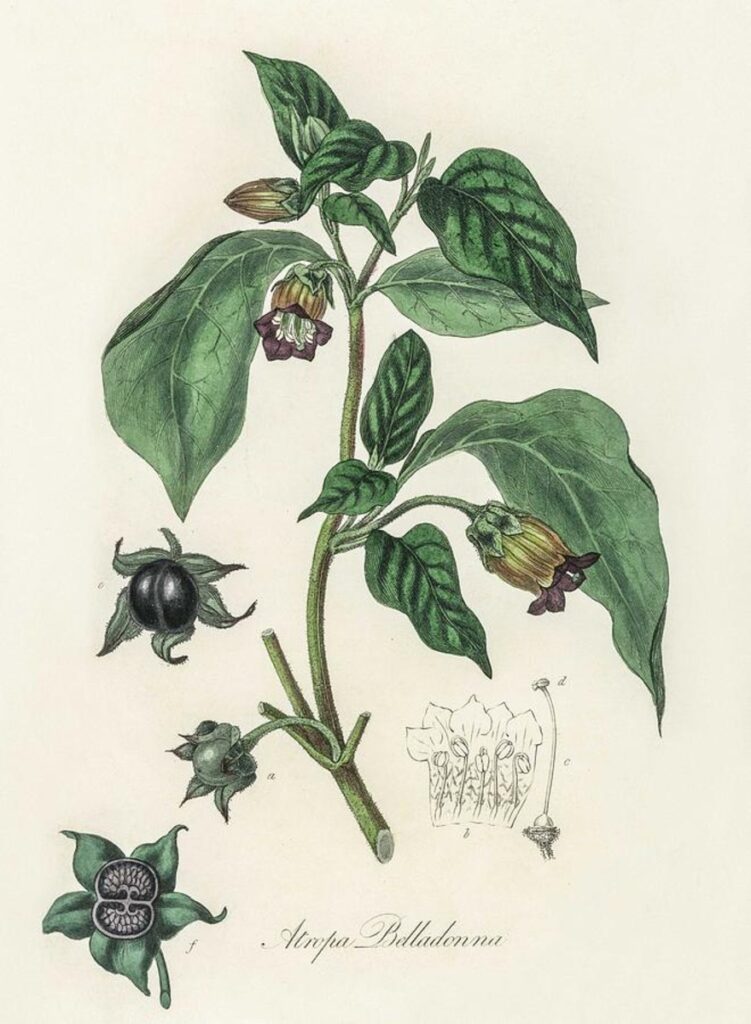
Magical Associations: Divination, astral projection, necromancy, darker aspects of magic, working with chthonic deities, and enhancing psychic visions.
Belladonna is highly toxic and should be handled with care by experienced practitioners. Ingesting even a small amount can be fatal.
Belladonna, or deadly nightshade, grows in Europe, North Africa, and Western Asia. Its use dates back to ancient times, primarily for medicinal purposes, as an aesthetic, and as a magical plant, despite its extreme toxicity.
It was often associated with the underworld and death, and with the goddess Hecate in Greek myth.
Belladonna has a variety of different spell uses in a highly diluted form :
- ointments to facilitate astral projection
- open gateways to other worlds
- burning small amounts as incense to promote visions
Plant the bulbs with the pointed tip facing up, ensuring that the top of the bulb is slightly above ground level. Water consistently during the growing season.
Yarrow (Achillea millefolium)

Magical Associations: Protection, courage, healing, divination, psychic abilities, love, banishing negativity, warding off evil.
Found across the Northern Hemisphere, Yarrow is named after the Greek hero Achilles, who reputedly used it to heal his soldiers’ wounds, hence its common names like “Soldier’s Woundwort.”
Yarrow has a variety of different spell uses :
- dried and hung in doorways to ward off evil
- carried in a sachet to ward off the evil eye
- sprinkled on the ground to create energetic boundaries
- added to teas to promote good health or spiritual insight
Plant seeds indoors or outdoors after the last frost in a place with plenty of light and water thoroughly after planting.
Wormwood (Artemisia absinthium)
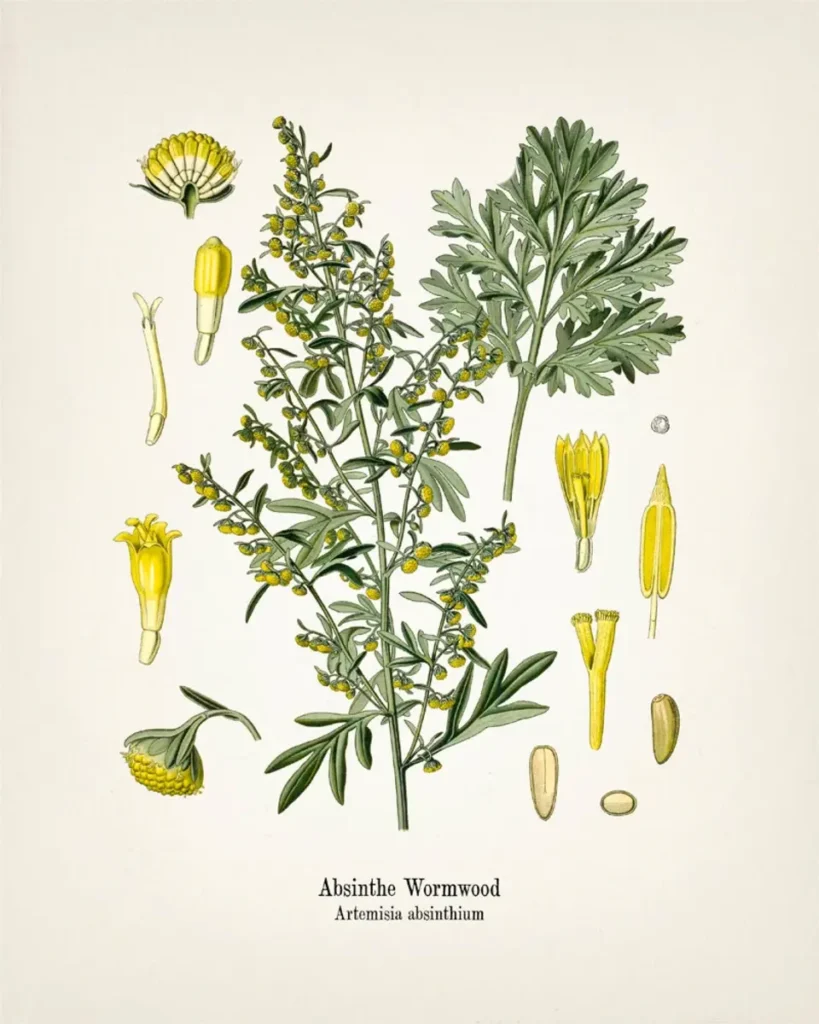
Magical Associations: Divination, psychic abilities, banishing, protection from evil, breaking hexes, grief work, and summoning spirits (caution advised).
Native to temperate regions of Eurasia and North Africa, Wormwood was used in ancient Egypt as an ingredient in ritual beverages.
Among the Greeks and Romans, the bitter herb was used to expel unpleasant truths.
In Germanic folklore, it was used to break hexes and curses.
Wormwood has a variety of different spell uses :
- burned as incense to open the mind during divination and astral projection
- added to recipes designed to counteract spells
- burn in a graveyard to summon spirits
- added to love potions to unveil true feelings
Sow seeds in spring or autumn in a sunny, well-drained spot, with plenty of water at first. Once established, the plant can tolerate dry conditions.
Bay Laurel (Laurus nobilis)
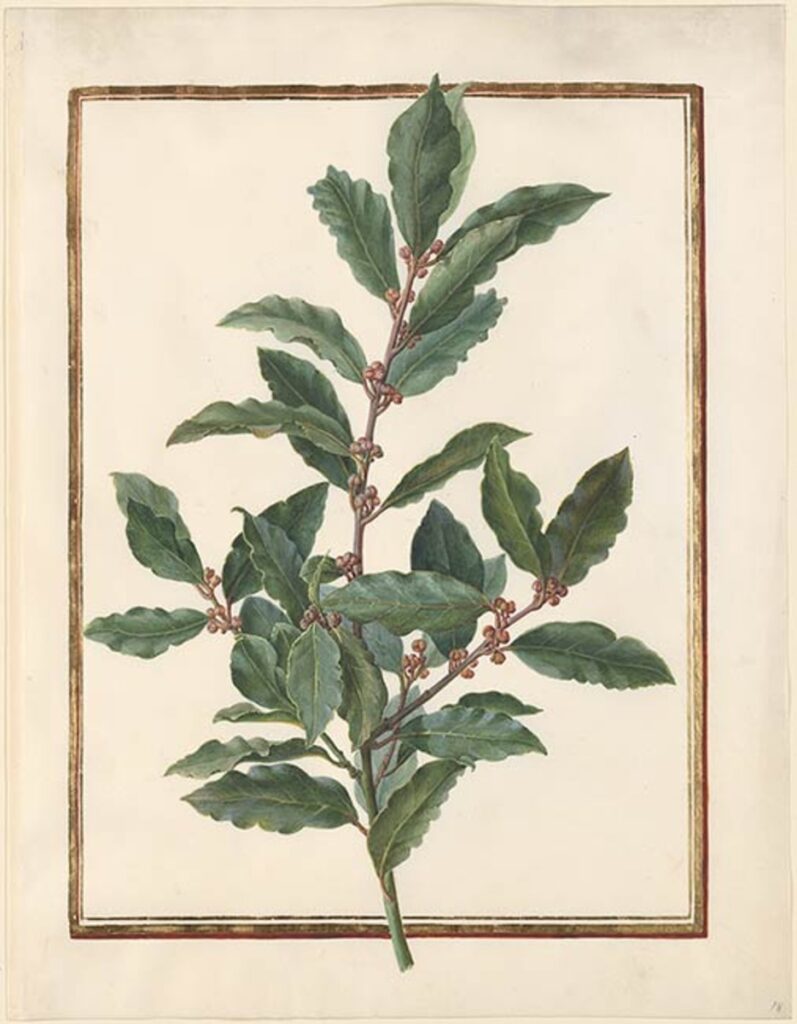
Magical Associations: Protection, psychic abilities, prophecy, wisdom, purification, healing, success, inspiration.
Native to the Mediterranean region, among the Greeks and Romans, the laurel was a symbol of honor, victory, and wisdom.
Sacred to Apollo, the god of prophecy, music, and healing, the priestesses at the Delphi Oracle were said to chew the leaves or inhale incense fumes to achieve their prophetic visions.
Bay Laurel has a variety of different spell uses :
- inhale incense for prophetic visions
- hand wreaths to ward off evil
- write a wish on a bay leaf and burn it
- carry a leaf on your person to attract prosperity
Plant in a sunny corner protected from strong winds in well-drained soil that is slightly acidic. Water deeply, fertilize well, and prune heavily.
Mistletoe (Viscum album)
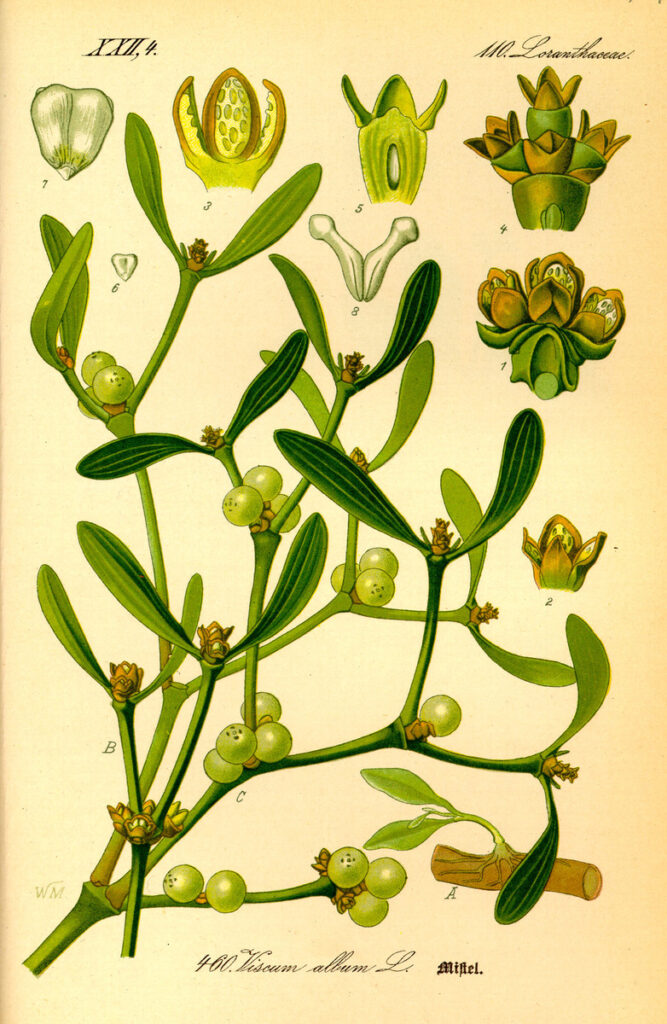
Magical Associations: Protection, healing, love, fertility, creativity, overcoming obstacles, warding off evil, blessing the home.
Be warned that the berries are highly toxic and should not be consumed, and all parts of the plant can cause a reaction.
Mistletoe is native to Europe, North Africa, and Asia and is revered in many cultures.
The ancient Celtic Druids considered it a sacred plant, especially when found growing on oak trees.
They harvested it with golden sickles during special ceremonies.
It was also considered protective by the Norse, as well as the only thing in existence capable of hurting the god Balder.
Mistletoe has a variety of different spell uses :
- hung in chimneys to protect the home against fire
- fertility offerings
- carry a piece to promote good health, as it is a universal cure-all
Mistletoe needs a host tree, such as an apple, lime, poplar, or hawthorn.
Make a sticky pulp of seeds and smear it on the tree’s bark in late fall.
Germination can take a while, and full growth.


